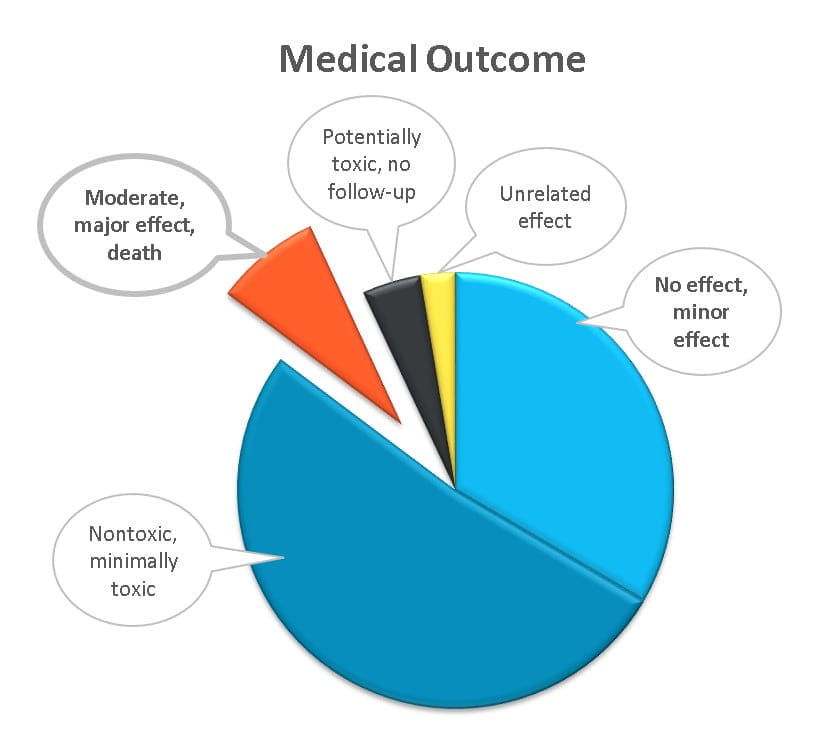Poison Statistics, National Data, 2012
Reports to U.S. Poison Control Centers
How Many?
In 2012, the then 57 (now 55) U.S. poison control centers provided telephone guidance for nearly 2.3 million human poison exposures.1 That’s about:
- 7.2 poison exposures/1000 population
- 45.7 poison exposures in children younger than 6 years/1000 children
- 1 poison exposure reported to U.S. poison control centers every 14 seconds
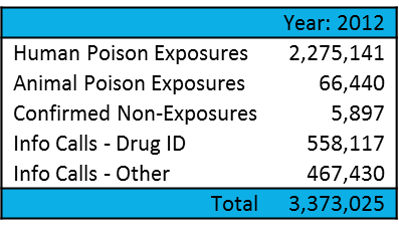
What Ages are Affected?
While young children (younger than 6 years) comprise a disproportionate percentage of the cases, poisoning affects ALL age groups, from infants to seniors. Peak poisoning frequency occurs in one and two year olds, but poisonings in teens and adults are more serious. Notice that the greater proportion of males in poison exposures occurring in children younger than 13 years switches to a female predominance in teens and adults.
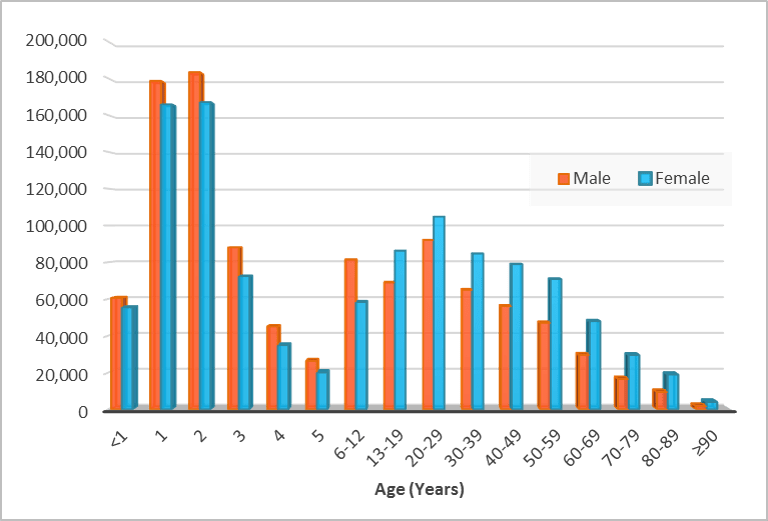 |
Across all ages, there were 715 poison exposures reported per 100,000 population. The highest incidence occurred in one and two year olds (8,550 and 8,701 exposures/100,000 children in the respective age groups). Adults aged 50 years or older averaged fewer than 300 exposures/100,000 population.1
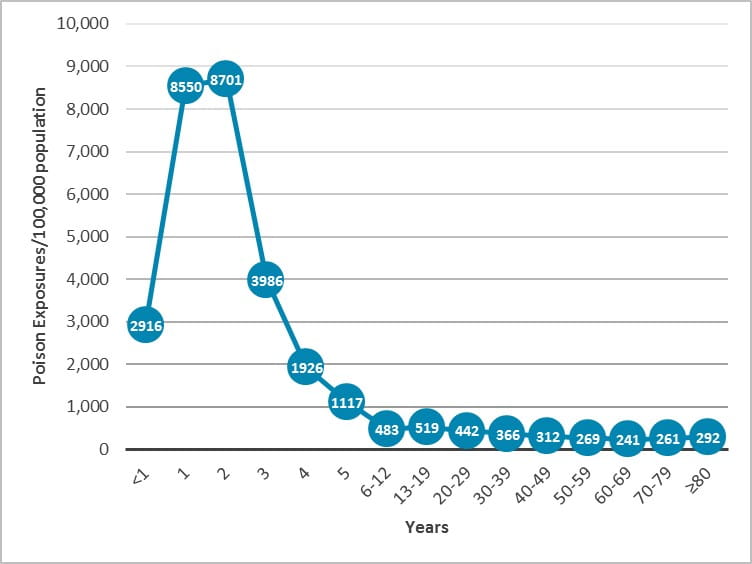 |
Children younger than 6 years comprise nearly half of poison exposures (48%), followed by adults (38%), then teens (7%).
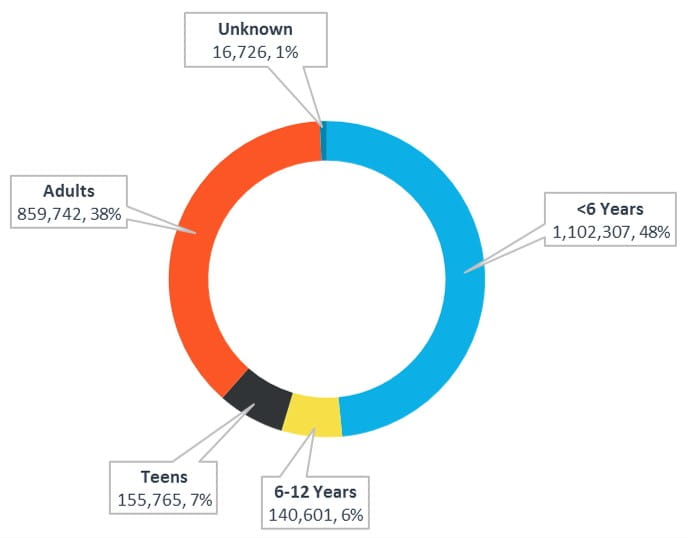 |
Why?
Across all ages, 80.1% of poison exposures reported to U.S. poison centers in 2012 were unintentional, 16.0% were intentional, and 2.6% were adverse reactions. In children younger than 6 years, 99% of exposures are unintentional, compared to only 41% of teen exposures and 61% of adult exposures.
Reason by Age Group (2012 NPDS, column percents)
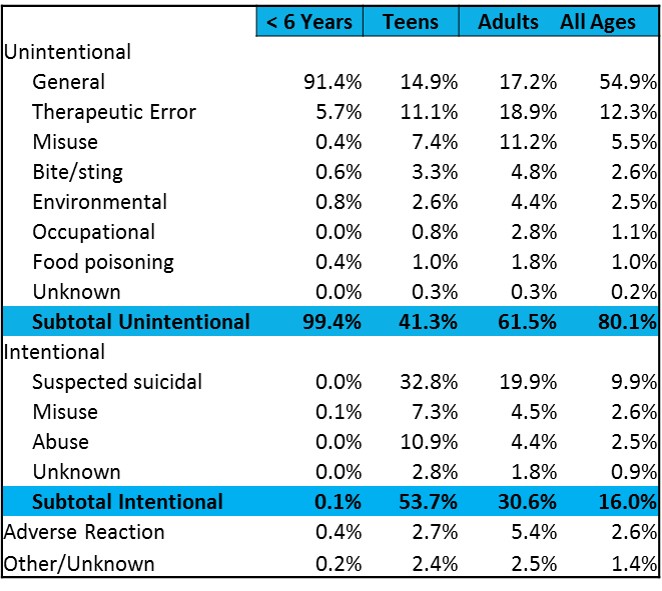
Most Common Substances Implicated in Poison Exposures?
Cosmetics and personal care products lead the list of the most common substances implicated in pediatric exposures (children younger than 6 years, NPDS, 2012). Pain medications and cleaning substances follow. These exposures are nearly always unintentional.
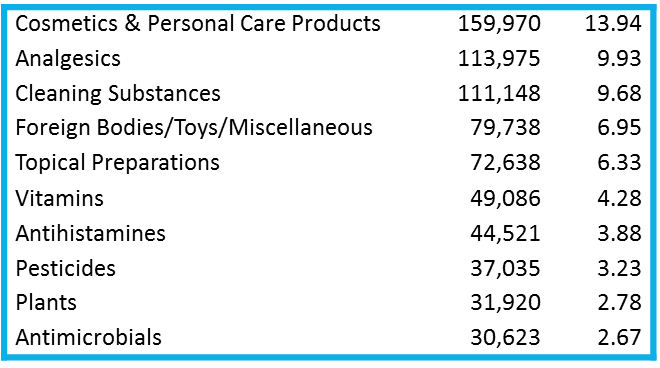
Pain medications lead the list of the most common substances implicated in adult poison exposures (20 years old or older, NPDS, 2012). Sedatives and sleeping medications, antidepressants, and cardiovascular medications follow. These exposures are often intentional.
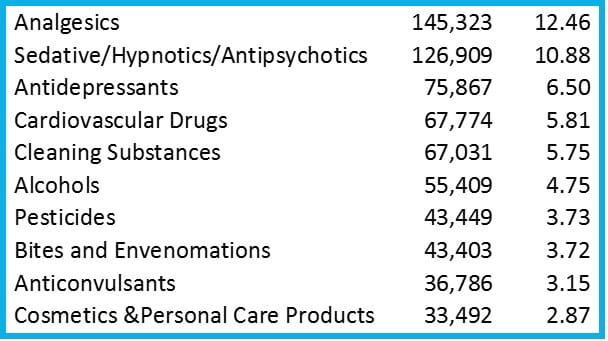
Most Serious Poisonings?
Frequency statistics are only a part of the poisoning story. To determine where to focus prevention efforts, we also need to know which poisonings are serious.
Pain medications are the single most frequent cause of pediatric fatalities reported to Poison Control. That’s a skewed picture, because carbon monoxide deaths are under-reported. The table below shows poisoning fatalities reported to US Poison Control from 2008 through 2012.
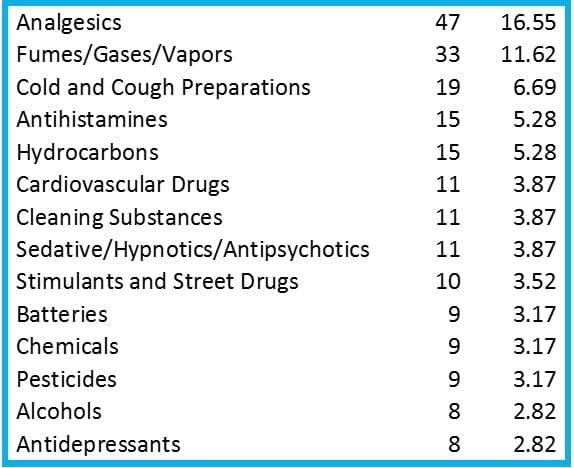
The substance categories with the largest number of categories across all ages (and including intentional exposures) include sedatives and sleeping medications, cardiovascular drugs, opioids, acetaminophen-containing medications, stimulants and street drugs, alcohols and antidepressants (NPDS, 2012).
How serious are poison exposures?
In 2012, 86% of poison exposures reported to U.S. poison centers were nontoxic, minimally toxic, or had at most a minor effect. (Includes the National Poison Data System codes: no effect; minor effect; not followed, nontoxic; and not followed, minimally toxic.)
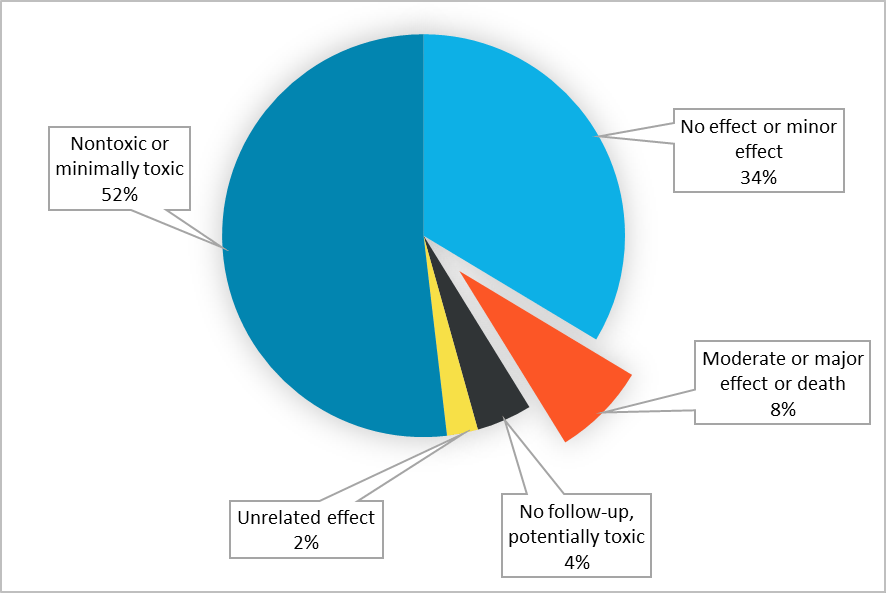 |
Intentional exposures were significantly more serious, with a 31-fold greater percentage of serious outcomes (major or fatal effects). Of the intentional exposures, 5.2% were major effects or deaths compared to 0.2% of unintentional exposures and 1.1% of all exposures. Just 2.6% of unintentional exposures had a moderate, major or fatal outcome compared to 30.1% of intentional exposures and 7.6% of all exposures.
Exposures in teens and adults were also considerably more serious, with 16.0% of teens and 16.8% of adults having a moderate, major or fatal effect compared to 1.0% of children younger than 6 years. Most exposures in children younger than 6 years (95.9%) were nontoxic, minimally toxic, or had at most a minor effect.
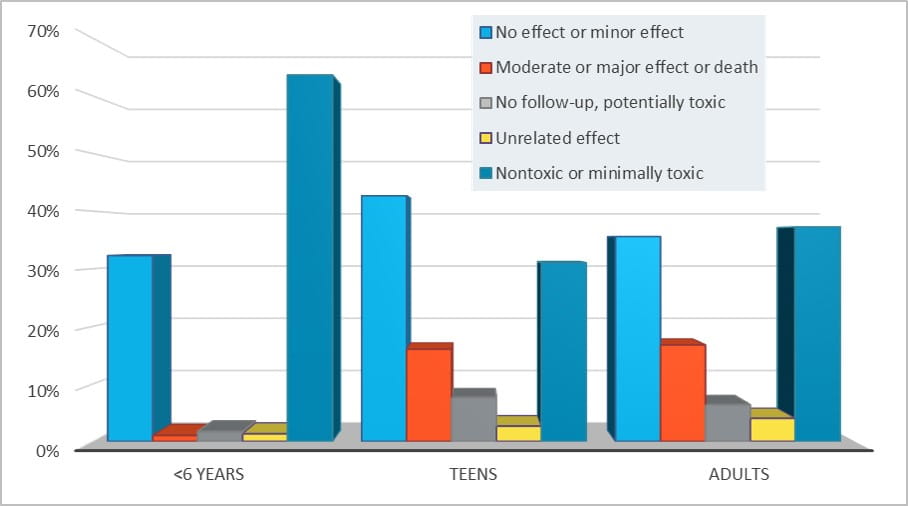 |
Many poison exposures can be safely observed at home, without an ER visit. Overall, 69.2% of poison exposures were observed without medical intervention in 2012. For poison exposures occurring in children younger than 6 years, 85.5% were only observed at home (without going to an ER or seeing a physician). In contrast, only 49.9% of adults were managed at the exposure site without medical intervention.
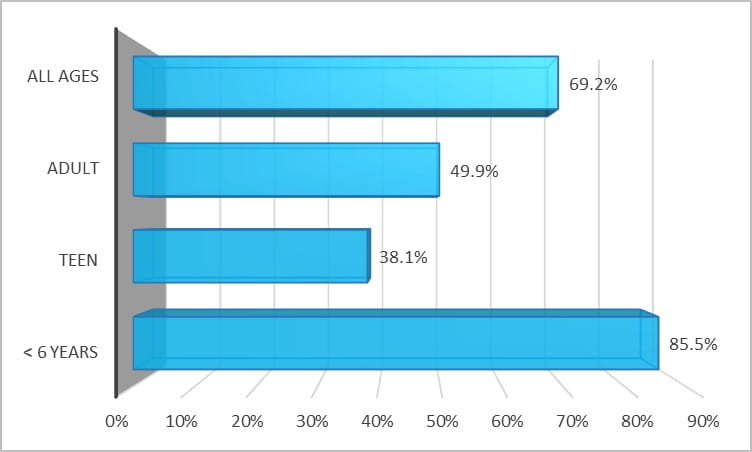 |
These nontoxic or minimally toxic poison exposures that can be safely observed at home are the cases that will most likely be amenable to triage by webPOISONCONTROL®.
Real-time poison exposure data enables surveillance
U.S. poison centers collect data in real time and upload those data every 7.6 minutes (median time to upload). Real-time data are used to find hazardous products quickly, follow substance abuse trends, and detect chem/bioterrorism incidents. Under a grant from the CDC, the American Association of Poison Control Centers and its member poison centers conduct automated, continuous surveillance of poison exposure cases. Alerts are sent when there are an unexpectedly large number of cases in an hour, when there’s an unexpectedly high frequency of a specific symptom, or when there are cases with combinations of clinical effects suggestive of specific poisonings that might require a rapid public health response. Toxicologists promptly investigate these alerts and inform public health officials if outliers are suspicious for events or products of concern.
For more detailed U.S. poison control data, check out the Annual Reports of the American Association of Poison Control Centers:
| 2013 | 2007 | 2001 | 1995 | 1989 | 1983 |
| 2012 | 2006 | 2000 | 1994 | 1988 | |
| 2011 | 2005 | 1999 | 1993 | 1987 | |
| 2010 | 2004 | 1998 | 1992 | 1986 | |
| 2009 | 2003 | 1997 | 1991 | 1985 | |
| 2008 | 2002 | 1996 | 1990 | 1984 |
AAPCC Data Disclosure Statement
Related Links
Summary of National Poison Statistics, Reports to US Poison Control Centers
Summary of Poison Statistics for the Washington, DC region
References
Poisoned? Get Expert Help.
Don't guess what you should do. Get accurate Poison Control answers online or by phone. Both are free and confidential.
or CALL 1-800-222-1222
Local Poison Statistics
Local data are available for the Washington, DC metro area.
Poison Statistics
